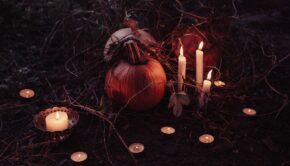The Organic Torah of Individual and Community
In our weekly Torah cycle, we are now reading the Book of Numbers. In Hebrew the name of the book is BaMidbar, which translates as “in the desert.” So, why do we call it in English “the Book of Numbers?” It is because in this book the Israelites (who are, in fact, in the desert) are counted. But it turns out that in Judaism, counting people is a very problematic idea. We see, for instance, that King David, when he decides to take a census of his kingdom, is punished by God with a terrible plague (II Samuel 24, I Chronicles 21). It is seen as arrogance and worse: making a person into a number, only to be counted for the king’s glory and power. Even today, in many Jewish communities there is a custom not to count Jews for a minyan. Instead people use a mnemonic, such as a verse from Torah: “hoshiah et amekha u’barekh et nahalatekhah u’rem ve’nasem ad olam” (Psalms 28:9) which has ten words. It’s one of those folk customs that has a deeper meaning. No one is a number; no one is a just a cog in the greater machine of society.
But hold on. We were just talking about making a minyan. That is a classic example of one of the times that we say a Jew is can participate in something larger than oneself. By virtue of participating in a minyan each Jew as helped create something larger that allows them to feel God’s presence in a new way. This is expressed in Judaism by saying certain prayers such as kaddish and barechu only in the presence of a minyan. Something emerges from the whole that is greater than the sum of the parts.
So, which is it? Does Judaism say each individual is unique, made in God’s image, and of unlimited value, and therefore it is not appropriate to count people? Or does Judaism say that people can join together and count themselves in larger units that can go beyond their individual selves?
The answer is, of course, yes. Judaism says both. But this paradox of humanity has been the source of hundreds of years of debates, theories and political ideologies. Some political theories have emphasized the rights and autonomy of the individual; others have made the group primary and subordinated the individual to the “greater good.” How can Judaism simply have it both ways?
The answer, I believe, is that Judaism isn’t a philosophy or an ideology. It is an organic, living culture. As such it acts as other living systems do: in nested patterns. Nestedness is one of the hallmarks of living systems. The cell is part of the organ, the organ a part of the organism; the tree is a part of the forest, the forest a part of the bio-region, and so on. Each level has its own boundaries and integrity, yet it is connected and integrally a part of the whole.
Judaism affirms that each individual is a unique, infinitely valuable image of God, yet we find our meaning, belonging and purpose when we come together with others. One of the commentators on the first parshah of the Book of Numbers, Rabbi Mordecai Yoseph Leiner, writes that when each individual was counted they would come before Moses and Aaron, and the leader of their own tribe. At that moment, when each of the leaders could look at the individual in the eye, that person was the most important person in the world.
It is as if to say, if we could all be seen for the deepest potential of who we are, the spark of God, the destiny and purpose that each one of us carries would shine in all its infinite value and we would each be, for that one moment, as if we were the highest manifestation of God in the world.
Yet, he goes on to explain, for all the glory of that individual moment, the fullest manifestation of God is when all the people come together. Remember that folk custom I mentioned earlier — saying a verse from the Torah with ten words in place of counting people with numbers. This echoes an ancient idea that each Jew is in fact a letter in the Torah. Together we make up words and verses that tell our story, and God’s story.
The secret of the Torah’s strength is that it lives in all of us – and we cannot be reduced to any theory, neither of the individual nor of the community. Like a letter of the Torah, like a tree in the forest, we shine with our unique individuality, and we create a vibrant, flexible and creative community when we take our unique talents and connect them all together.







2 Responses to The Organic Torah of Individual and Community